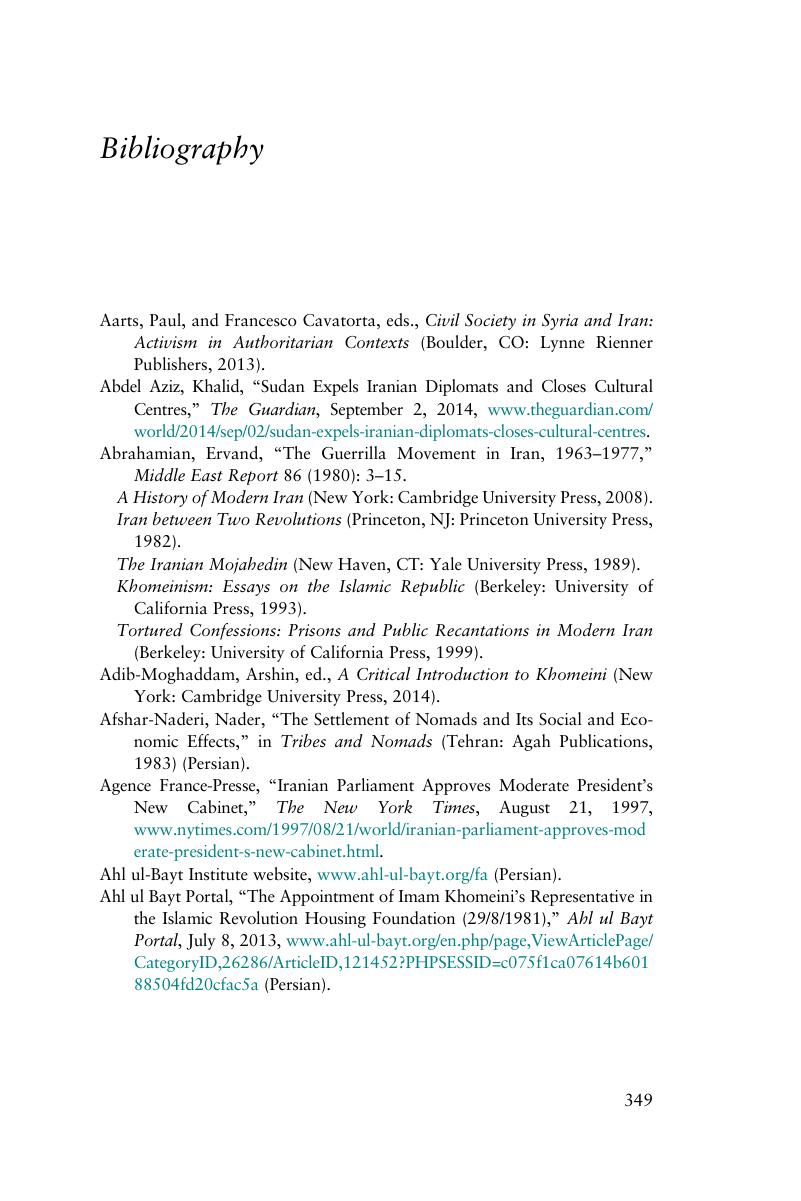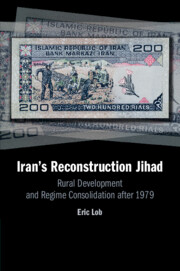Book contents
- Iran’s Reconstruction Jihad
- Iran’s Reconstruction Jihad
- Copyright page
- Contents
- Figures
- Tables
- Introduction
- 1 Inception (1962–1979)
- 2 Expansion (February 11–November 6, 1979)
- 3 Consolidation (1979–1989)
- 4 Demobilization and Institutionalization (1983–2001)
- 5 Disillusionment and Mobility (1983–2001)
- 6 Associationalism (1983–2013)
- 7 Africa (1985–2013)
- 8 Lebanon (1988–2013)
- 9 Jihadi Culture and Management (2005–2017)
- Conclusion
- Bibliography
- Index
- References
Bibliography
Published online by Cambridge University Press: 06 February 2020
- Iran’s Reconstruction Jihad
- Iran’s Reconstruction Jihad
- Copyright page
- Contents
- Figures
- Tables
- Introduction
- 1 Inception (1962–1979)
- 2 Expansion (February 11–November 6, 1979)
- 3 Consolidation (1979–1989)
- 4 Demobilization and Institutionalization (1983–2001)
- 5 Disillusionment and Mobility (1983–2001)
- 6 Associationalism (1983–2013)
- 7 Africa (1985–2013)
- 8 Lebanon (1988–2013)
- 9 Jihadi Culture and Management (2005–2017)
- Conclusion
- Bibliography
- Index
- References
Summary

- Type
- Chapter
- Information
- Iran's Reconstruction JihadRural Development and Regime Consolidation after 1979, pp. 349 - 372Publisher: Cambridge University PressPrint publication year: 2020



